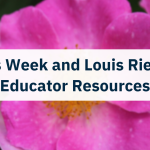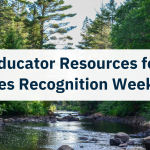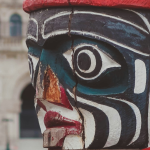Carrying Truth and Reconciliation Forward in the Classroom
On September 30, Canada honours the National Day for Truth and Reconciliation—also known as Orange Shirt Day—to discuss the effects and legacy of residential schools and build bridges toward reconciliation. For educators, this day highlights the importance of truth and reconciliation in the classroom, ensuring that learners of all ages engage with these histories and their lasting impacts.
This national day of reconciliation grew out of an Indigenous-led grassroots movement called Orange Shirt Day. This movement began in May 2013 when Phyllis Webstad told the story about how her new orange shirt, a gift from her grandmother, was taken away from her when she went to residential school at six years old. This story inspired Orange Shirt Day and remains the reason why orange is so deeply associated with the journey of truth and reconciliation within Canada.
What started out as a commemoration for the St. Joseph Mission residential school has now moved beyond a day of remembrance to a sustained call to action across Canada. Educators play an important role in ensuring that we follow through on this call to action by embedding reconciliation into their daily teaching practice. In this post, we share some guiding principles, reflection questions, and resources to help educators carry the conversation forward all year.
Guiding Principles for Educators
There are some guiding principles educators can use to bring truth and reconciliation into the classroom year-round.
Truth-Telling
Truth-telling is an integral part of reconciliation because it promises to “change national narratives and create a new collective memory that acknowledges crimes of the past.” For Indigenous Peoples, truth-telling is necessary to address the harm caused by colonization, including policies that sought to erase Indigenous presence, voices, and histories.
Historically, governments and institutions have denied, silenced, or erased the truths shared by Survivors and their families. Truth-telling is both a political and deeply personal act. It challenges denial and calls on society to reckon with its past. Internationally, truth-telling processes have been recognized as a way to confront histories of violence and injustice. In Canada, it continues to be central to reconciliation.
In classrooms, truth-telling requires educators to centre the voices of Survivors and other Indigenous people. By directly engaging with oral histories, testimonies, and community resources, learners can begin to understand the legacy and ongoing impacts of residential schools from those who lived them. This approach shifts learning away from abstract or sanitized accounts and toward meaningful engagement with truth.
When choosing resources to support truth-telling, ask yourself:
- Whose voice is being centred? Is the resource rooted in Survivor testimony, Indigenous authorship, or lived experience?
- Whose perspective is missing? Are Indigenous voices present, or is the narrative filtered through a non-Indigenous lens?
- Does the resource challenge denial or erasure? Does it clearly name the harms of residential schools and colonization?
- Is it respectful and age-appropriate? Will learners be guided to engage with the truth in a meaningful but not harmful way?
- How does this resource connect to ongoing reconciliation? Does it frame residential schools as part of a continuing legacy rather than as a closed chapter of the past?
Relationship Building
For many educators, schooling offered little accurate knowledge about Indigenous Peoples. In many cases, Indigenous histories, languages, and cultures were absent from curricula, or when included, were misrepresented. These portrayals, shaped by the settler state rather than by Indigenous voices, contributed to widespread misunderstandings and stereotypes.
Today, building authentic relationships with local Indigenous communities is essential for creating meaningful and authentic learning experiences that centre Indigenous voices and perspectives. These relationships enrich classroom teaching, support cross-cultural understanding, and ensure that learners engage with knowledge grounded in lived experience.
One way to foster these connections is by inviting Indigenous guest speakers or hosting cultural events in schools. These visits can bring learners into direct contact with the diverse traditions, knowledge systems, and perspectives of Indigenous Peoples. Because such visits require respectful planning and collaboration, we’ve shared practical tips and strategies in our post on hosting Indigenous guest speakers and events.
When reflecting on the process of building relationships, ask yourself:
- Whose relationships are shaping the learning? Am I creating space for Indigenous community members, Elders, or Knowledge Keepers to lead, or am I relying mainly on outside/settler-created resources?
- Am I approaching these relationships respectfully? Have I taken time to learn about cultural Protocols and expectations for engaging with Indigenous communities?
- How are learners experiencing these relationships? Are students engaging with Indigenous voices as living, dynamic, and diverse, rather than as static “content” in the curriculum?
Reciprocity and Respect
At the heart of reconciliation is a commitment to reciprocity and respect. These values shape how we teach, learn, and relate to one another. In education, reciprocity means that learning is not one-directional; it honours the exchange of knowledge between teachers, learners, Elders, families, and communities. Respect ensures that this exchange happens in ways that acknowledge Indigenous knowledge systems, experiences, and Protocols.
For educators, this principle is about more than including Indigenous content in the classroom. It is about creating a learning environment that reflects these values in practice. Reciprocity can look like inviting learners to share their own experiences and knowledge, while respect can mean ensuring Indigenous voices and perspectives are presented authentically and with care.
Together, they foster classrooms where truth-telling and reconciliation are lived, not just taught.
We’ve shared some practical approaches for weaving these principles into classroom practice in our earlier post on using Indigenous pedagogies in your classroom, including the four Rs of Indigenous education.
When reflecting on how reciprocity and respect are embedded in your teaching practice, ask yourself:
- Am I treating learning as a two-way exchange? How are learners, families, and community members contributing knowledge alongside educators?
- Whose voices are being respected in this lesson? Are Indigenous perspectives represented authentically and in their own words?
- Am I honouring Protocols? Have I taken care to ensure resources and activities reflect respect for Indigenous traditions and knowledge systems?
- How are respect and reciprocity visible in my classroom? What practices, routines, or activities make these values part of daily learning?
Conclusion
As educators, we bring truth and reconciliation into the classroom every day through how we teach, what stories we share, and how we honour Indigenous voices. We encourage you to explore the resources in this blog post and reflect on how you can commit to year-long action following the principles of truth-telling, relationship-building, and respect and reciprocity.
Resource List
- National Centre for Truth and Reconciliation – Taking Truth to Action.
- This weeklong program has free, age-appropriate programming for students in grades 1–12. Students can learn directly from residential school Survivors, Indigenous artists and athletes, and other subject matter experts.
- Orange Shirt Society – Residential School and Reconiliation Resources
- The Orange Shirt Society, formed by the founders of Orange Shirt Day, have a selection of age-appropriate digital and print resources to support teaching and learning about reconciliation and the residential school system.
- Empowering the Spirit – Orange Shirt Day and Beyond
- Empowering the Spirit is a curated collection of resources to help educators integrate Indigenous pedagogies into their teaching practice. Their Orange Shirt Day and Beyond section has K–12 lesson plans and classroom activities designed for the week before Orange Shirt Day.
- Learning Bird – Orange Shirt Day Resource Kits (K–12)
- Learning Bird has developed free, classroom-ready Orange Shirt Day resource kits for K–12. Each kit includes background information, framing presentations, and in-class activities designed to help learners engage with the history and legacy of residential schools in age-appropriate ways. You can explore and download the kits and watch our free webinars on our website.
Sources
- Hurst, J., & Maddison, S. (2023, April 10). First Nations people have made a plea for “truth-telling”. By reckoning with its past, Australia can finally help improve our future. The Conversation. Retrieved August 27, 2025, from https://theconversation.com/first-nations-people-have-made-a-plea-for-truth-telling-by-reckoning-with-its-past-australia-can-finally-help-improve-our-future-202137
- ReconciliationWA. Truth-telling and Listening. https://www.recwa.org.au/hub/course/truth-telling-and-listening/








